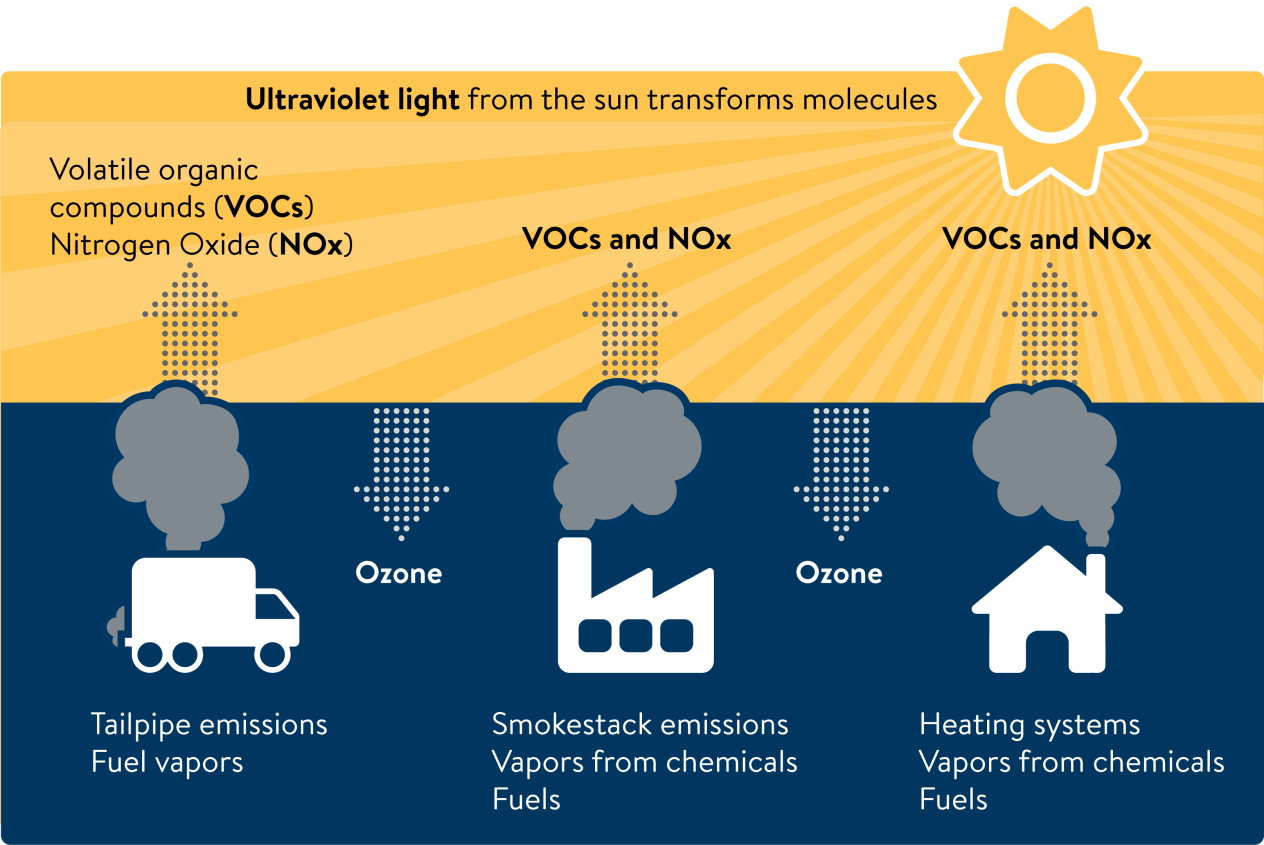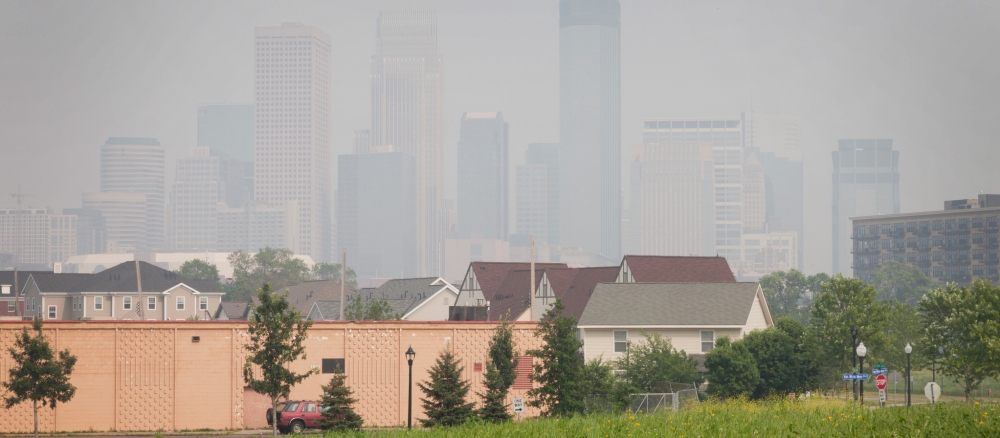Hot, sunny weather brings the possibility of air quality alerts due to ozone. But what exactly is ozone? Does it help protect Earth from being fried by the sun? Or is it a harmful ground-level air pollutant? Is it natural or man-made?
In fact, it’s all of the above. Ozone is a chemical that comes from both natural and man-made sources. It’s one of the six “criteria” air pollutants regulated under the federal Clean Air Act. Unlike the others, though, ozone is not emitted directly into the air by any one source. Instead, it's formed by chemical reactions among other airborne pollutants — particularly on hot, sunny days, perfect for “cooking” the chemical brew that becomes ozone.

Whether ozone is harmful or not depends on where it is. The rule of thumb “good up high, bad nearby” helps determine whether it helps or hurts us. While ozone up high in the upper atmosphere protects us from harsh ultraviolet radiation, when ozone is nearby at ground level it becomes what we call smog, which can be harmful for humans, plants, and other living things.
Ozone can irritate the eyes, nose, and throat, and can aggravate asthma and other lung diseases. Some health experts have compared the effects of breathing high ozone levels to getting a sunburn in the lungs. Exposure to ground-level ozone can increase the risk of premature death for sensitive groups. When ozone approaches levels that can affect these groups, the MPCA issues an air quality alert.
During an air quality alert, everyone should limit time spent outdoors and reduce or eliminate activities that contribute to air pollution, such as outdoor burning and unnecessary vehicle trips.
While Minnesota typically has pretty clean air, especially compared to other major population centers in the United States, and we maybe get one or two air quality alerts per year due to ozone, MPCA Meteorologist Matt Taraldsen said that the record warmth and very low dewpoints this spring means we may see five to seven alerts due to ozone this year.
"Those conditions make the perfect environment for the formation of ground-level ozone," he said. "That many ozone days is well above average."
Taraldsen said wildfire smoke could even be a factor in the creation of ground-level ozone.
"Usually, dense smoke is thick enough to prevent sunlight from getting down to the ground," Taraldsen said. "But in 2023 the smoke from the Canadian wildfires had so many volatile organic compounds that even the refracted sunlight was able to generate ground-level ozone."
As this summer starts to heat up, Taraldsen said to be on the lookout for more ozone-based air quality alerts. The MPCA tracks current air quality conditions on its website and on the AirNow mobile app.
